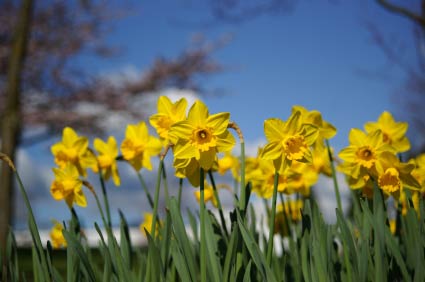Some regard the Daffodil as the symbol of regard. This flower is a Narcissus; however, all Narcissi are not Daffodils. The Greek Myth of Narcissus and Echo explain why this flower holds its drooping form. Narcissus was in love with Echo who, in the end did not return his love. He hid in a cave to escape his sorrow. Often, he would come out of the cave to check his reflection in the lake. Out of vanity, he desired a closer look at himself so he leaned in closer at the lake's edge, falling in. After he drowned, a Narcissus bloomed in his place. The flower's drooping head leaning over to stare at its reflection in the lake's water portrayed the vanity of Narcissus.
The Romans brought the Daffodil, also known as the Jonquil, back to Britain because it was thought that the flower's sap would heal wounds. Unfortunately, the sap of the Daffodil did little to heal wounds. In fact, it actually worsened wounds by irritating them further. The sap contained sharp crystals known as calcium oxalate, which protected these flowers against animals from eating them. This calcium oxalate is also the reason why Daffodils do not hold up well in flower arrangements. They cause other flowers in the arrangement to wilt. Although these flowers were not put to use as healing flowers, Daffodil roots proved useful during Greek times of famine. Their roots are edible (although the bulbs are toxic). Signified by a large trumpet nose surrounded by bright yellow, sunshine petals, the Jonquil is said to bring good fortune to those who do not step on them. As an enduring symbol of rebirth, Daffodils are often the first flowers to bloom during Spring.




